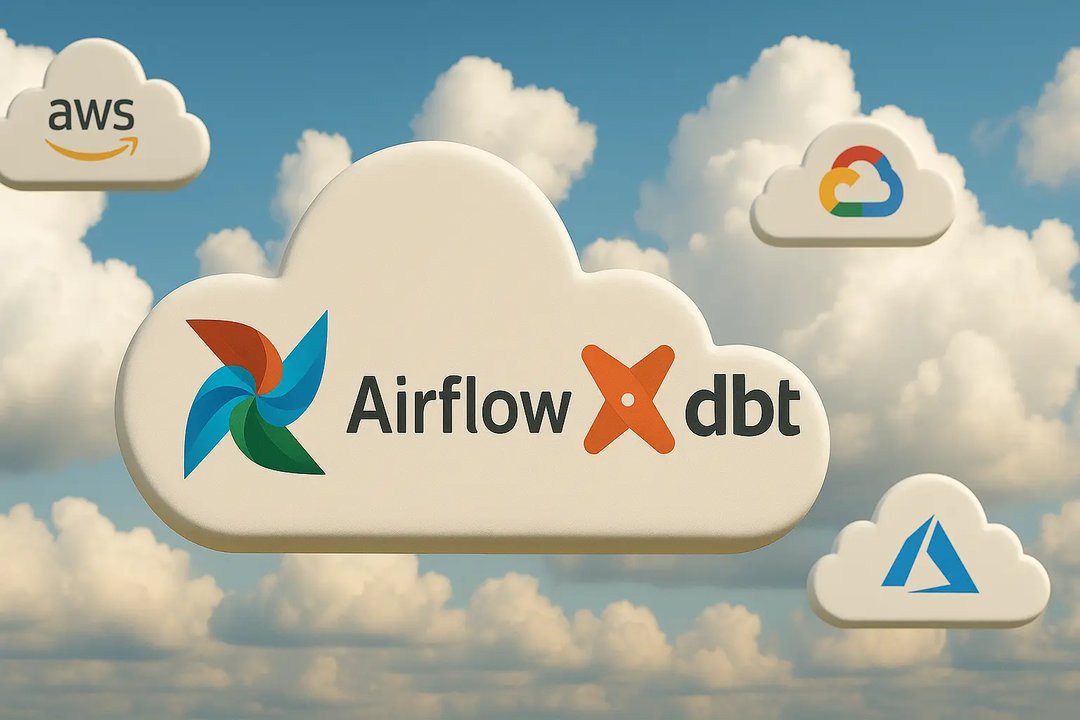
Maria Chojnowska
8 August 2023, 8 min read

What's inside
- What is a Real-time Data Pipeline?
- Uses of Data Pipelines
- Best Practices for Using a Data Pipeline in the Cloud
- Big Data Pipelines for Real-time Computing
- Conclusion: How We Can Help
In today's data-centric world, the ability to process information in real time is not just a nice-to-have but a must-have for many organizations. This is where real-time data pipelines come into play.
If your company needs help making sense of high volumes of data or needs a solution to process data faster, this blog post is for you.
You will find here:
- What is an example of a real-time data pipeline?
- What are some best practices for using a data pipeline in the cloud?
- What are the uses of data pipelines?
- How would you describe big data pipelines for real-time computing?
What is a Real-time Data Pipeline?
A real-time data pipeline is a powerful, dynamic system meticulously designed to gather, process, and analyze data the very instant it is produced, ensuring minimal latency. These pipelines form the heart of real-time data analysis, driving data at lightning speed from the point of origin to the point of consumption while performing transformations and computations on-the-fly.
If you're new to data pipelines, I recommend reading our post on "Introduction to Data Pipelines: Concepts and Benefits" to comprehensively understand the subject.
They provide a high-throughput highway for the data, starkly contrasting to the traditional batch-processing methods, which work on data at scheduled intervals.
What is an example of a Real-time Data Pipeline?
Let's consider an example to understand this better - the stock market. Here, milliseconds can make a difference between profit and loss. Financial trading systems use real-time data pipelines to rapidly process substantial volumes of data from various stock exchanges across the globe. As soon as a trade is made, it's immediately captured by the pipeline. The raw data is then transformed in real-time, often being enriched with data from other sources to provide more context, for instance, historical stock prices or relevant news articles. After transformation, sophisticated algorithms analyze the data to generate insights, which are instantaneously forwarded to trading systems. Traders use these insights to make informed decisions, armed with the most recent market data.
Real-time data pipelines are an amalgamation of advanced technology and intelligent design that allow businesses to deal with the dynamism and volume of today's data, making it possible to act upon information when it's most valuable - now.
Uses of Data Pipelines
Data pipelines have many uses, especially those that can handle real-time data. For instance:
- Real-Time Analytics
Real-time data pipelines enable businesses to execute analytics on their data as soon as it's generated. This immediate insight generation is vital in several sectors. For instance, in the financial industry, it helps detect fraud by identifying unusual transaction patterns. In digital advertising, it facilitates real-time bidding, where ad impressions are auctioned off in the milliseconds it takes for a webpage to load.
- Personalization and User Experience
Data pipelines are instrumental in improving personalization and user experience across several industries. In the e-commerce sector, businesses leverage real-time data to tailor product recommendations based on the user's current and past browsing behavior, improving the relevance of suggestions. Streaming platforms like Netflix and Spotify use similar techniques to recommend movies, series, or songs that align with a user's preferences.
- **Predictive Maintenance
For IoT-enabled industries, real-time data pipelines can be used to predict potential system failures. Sensors embedded in machinery transmit data regarding the equipment's operating conditions, such as temperature, vibration, and pressure, which are processed in real-time to predict potential faults. Predictive maintenance enables businesses to intervene before a failure occurs, avoiding production downtime and saving significant repair costs.
- Decision-Making and Strategy Planning
Real-time data pipelines are crucial in business intelligence and strategic planning. Processing vast amounts of data in real-time enables businesses to monitor market trends, track performance metrics, and make data-driven decisions quickly.
- Supply Chain Optimization
In the logistics and supply chain industry, data pipelines can provide real-time tracking information, helping companies monitor their shipments and manage their inventories more effectively. These insights can help optimize routes, reduce delivery times, and improve customer satisfaction.
- Health Monitoring
In healthcare, real-time data pipelines have the potential to revolutionize patient care. Wearable devices can monitor vital signs, and real-time data processing can alert medical professionals to abnormalities, allowing for swift medical intervention when necessary.
- Social Media Monitoring
Businesses use data pipelines to monitor social media in real time, keeping track of what's being said about their brand, products, or services. This instant feedback allows them to quickly address customer complaints, manage PR crises, and identify opportunities for engagement.
By enabling real-time data processing and analysis, data pipelines provide businesses with the tools to become more responsive, proactive, and data-driven.
Best Practices for Using a Data Pipeline in the Cloud
When using a cloud-based data pipeline, remember the following best practices:
- Ensure Scalability
Scalability is a vital consideration when building a cloud-based data pipeline. As data volumes and processing needs grow, your data pipeline should scale accordingly. Make use of cloud-based services that offer on-demand scalability, thus ensuring the pipeline's ability to handle peak loads without compromising performance.
- Prioritize Security
In the era of digital transformation, data security cannot be overstated. Always encrypt data at rest and in transit. Use secure cloud storage and ensure appropriate access control to prevent unauthorized access. Implement strong authentication methods and regularly review user access levels to minimize risk.
- Maintain Data Quality
Data quality directly impacts the insights derived from it. Thus, implement data validation checks at ingestion points to identify and correct issues early. You might also consider data cleansing and enrichment steps in the pipeline to improve data quality further.
- Continuous Monitoring and Alerting
Set up real-time monitoring for your data pipeline to keep track of its performance and health. Monitoring helps to spot issues before they escalate, minimizing downtime. Implement alerting systems to notify you of any performance anomalies or processing errors immediately.
- Error Handling and Recovery
Your data pipeline should be resilient and capable of recovering from failures. Design the pipeline in a way that allows for reruns and backfills of data in case of any processing failures.
- Version Control and Documentation
Just like your application code, the code for your data pipeline should also be under version control. Changes to the pipeline should be documented and tested thoroughly before deployment. This provides an audit trail and makes debugging easier.
- Leverage Cloud-native Services
The cloud comes with a plethora of services designed to make data management easier. Leverage these services for ETL (Extract, Transform, Load) operations, data warehousing, and analytics. For instance, services like AWS Glue for ETL, Amazon Redshift for data warehousing, and Google BigQuery for analytics can simplify the pipeline development process.
By adhering to these best practices, you can ensure your cloud-based data pipeline is robust, reliable, and efficient, providing valuable, real-time insights for your business.
For more information on designing effective data pipelines, consider reading our post on "Designing Effective Data Pipelines: Best Practices and Strategies".
Big Data Pipelines for Real-time Computing
A big data pipeline for real-time computing is a complex system designed to ingest, process, and analyze vast amounts of data in real-time. It involves several stages, including data collection, data processing, and data analysis, all occurring concurrently to provide immediate insights.
At its heart, a big data pipeline functions on the principles of distributed computing, where the data is partitioned across multiple nodes for parallel processing. This approach helps manage the sheer volume, velocity, and variety of big data, ensuring quick turnaround times for data insights.
Core Components
The primary components of a big data pipeline for real-time computing usually include:
- Data Ingestion
Data is captured from various sources like web logs, social media, IoT devices, etc., and ingested into the pipeline.
- Data Processing
Once ingested, the data is cleaned, transformed, and structured for analysis. This stage may involve operations like data enrichment, filtering, aggregation, and more.
- Data Analysis and Storage
The processed data is analyzed in real-time using sophisticated algorithms to extract meaningful insights. These insights can then trigger immediate actions or decisions. The data is also stored for further analysis, reporting, and machine learning purposes.
Technologies Involved
Big data pipelines for real-time computing often leverage a range of cutting-edge technologies:
- Apache Kafka
A distributed streaming platform, Apache Kafka, is often used for real-time data ingestion and processing. It allows for the handling of real-time data feeds with low latency.
- Apache Spark
Known for its in-memory processing capabilities, Apache Spark can quickly perform data transformations and analyses.
If you're interested in a step-by-step guide on building a streaming data pipeline with these technologies, check out our post "How to Build a Streaming Data Pipeline with Apache Kafka and Spark".
- NoSQL Databases
Databases like MongoDB, Cassandra, and HBase are often used for their ability to handle large volumes of structured and unstructured data.
- Cloud Platforms
Cloud platforms like AWS, Google Cloud, and Azure offer various services for big data processing, like AWS Kinesis, Google Pub/Sub, and Azure Stream Analytics.
Conclusion: How We Can Help
In a data-driven world, big data pipelines for real-time computing offer the tools necessary to harness the power of large data sets quickly and efficiently. The immediate insights derived can drive operational efficiency, enhance customer experience, enable better decision-making, and uncover new opportunities for businesses.
Our team at Sunscrapers specializes in setting up efficient, robust, and secure real-time data pipelines. With our extensive experience and expertise, we can tailor solutions to meet your unique business needs.
Ready to unlock the power of real-time data processing? We're here to guide you every step of the way. Contact us today for a free consultation, and let's make your data work harder for you.


